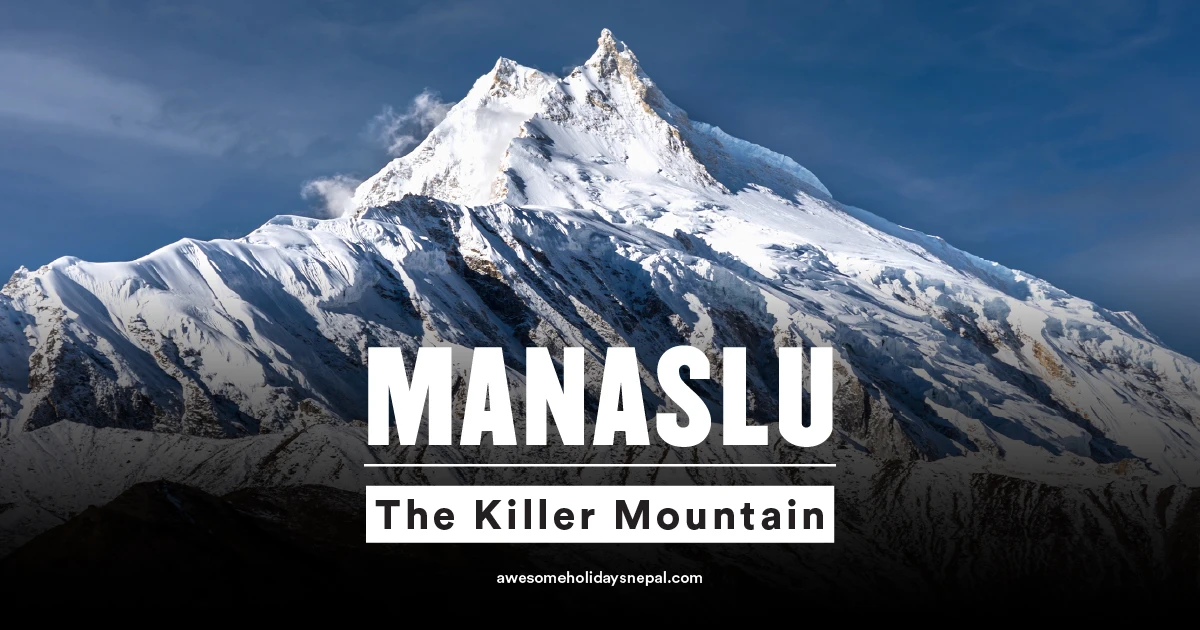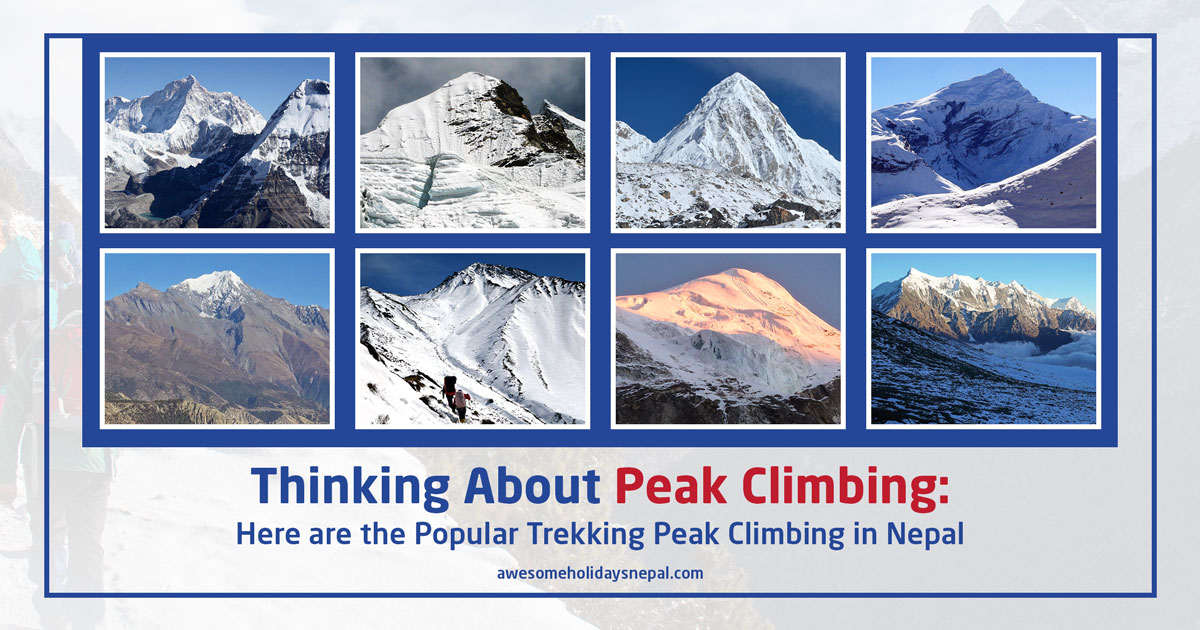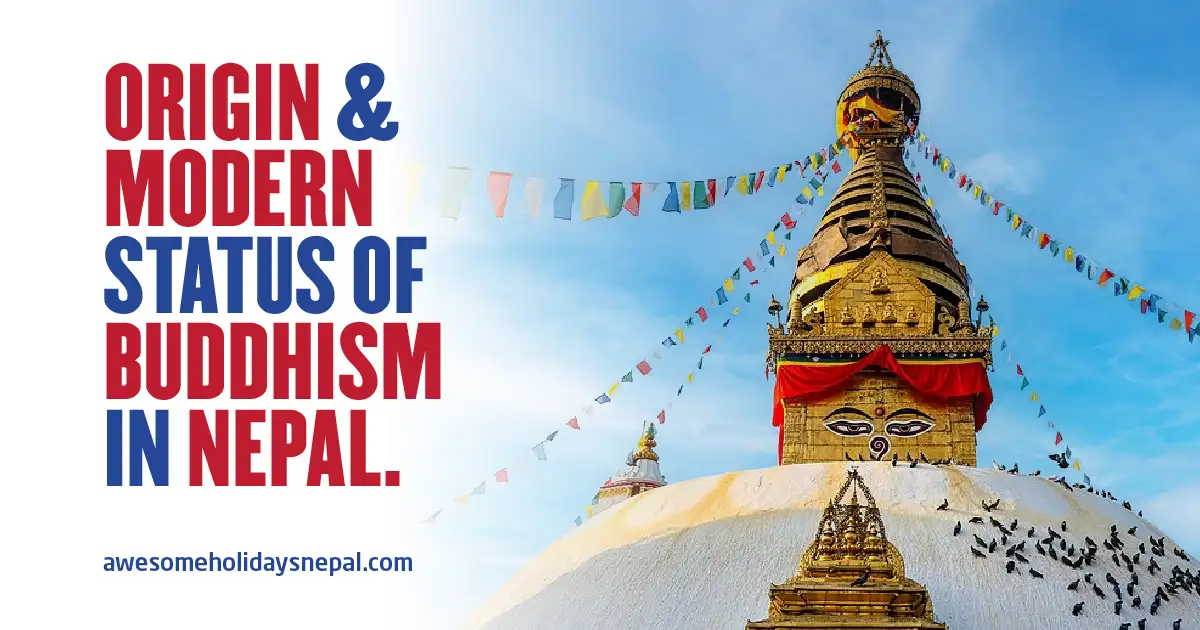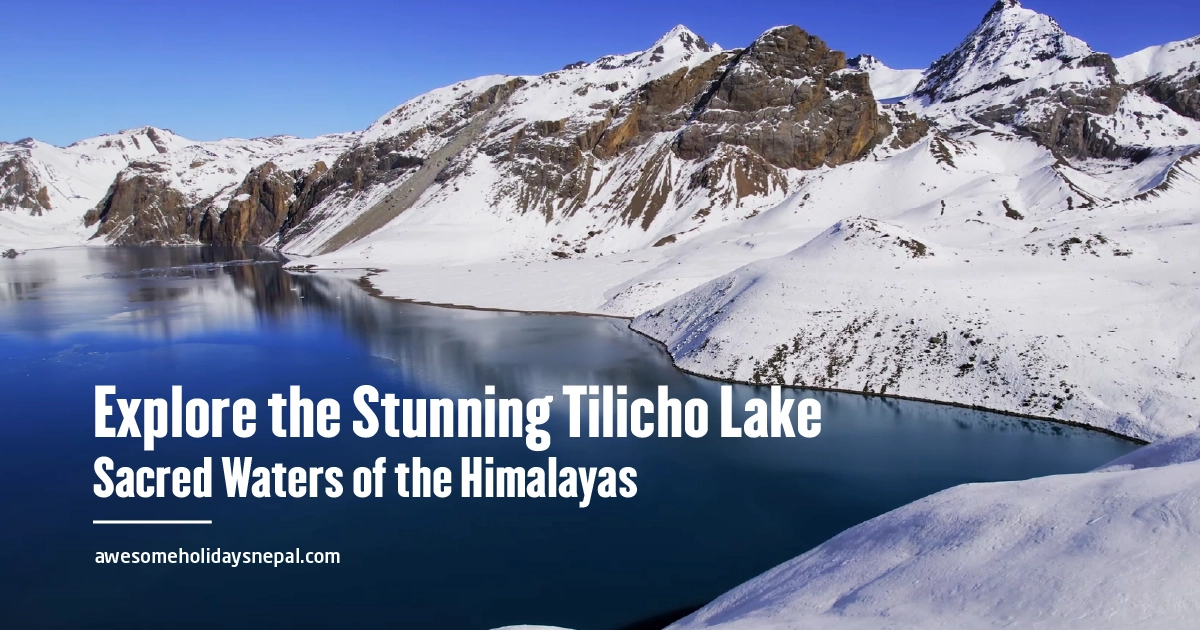Why Manaslu is Considered Killer Mountain?

Nepal is home to numerous highest peaks in the world. The country is known as the Land of Himalayas and Buddha. We have got 8 out of the 14 highest mountains in the world out of 14. Among them, Mount Manaslu is the 8th highest peak in the World. The mountain is situated at the height of 8,163 meters (26781 ft) above sea level. It is in the Mansiri Himal range of Nepal.
The name of the mountain translates to the “Mountain of the Spirit”. The word Manaslu is derived from the Sanskrit word Manasa, which means “intellect” or “soul”. Mount Manaslu is known as the “Killer Mountain” or “Death Mountain”. It is not as technical as Mount Everest but still has a high fatality rate. So, let’s dive deep into the reason Manaslu is considered the Killer Mountain.
Let’s Know About Mount Manaslu
Mount Manaslu is the eighth highest peak in the World. The Mountain is located in the Mansiri Himal range (Nepalese Himalayas) in the west-central part of Nepal. It is at 8,163 meters (26,781 ft) above sea level. The geographical coordinates of the mountains are 28º 33′ 01 latitude and 84º 33′ 42 longitude. The peak is perched between the two trekking routes Langtang valley to the east and Annapurna circuit to the west.
The thrilling mountain was first climbed on May 9, 1956, A.D. but it was first attempted back in 1952 A.D. The Japanese expedition members Toshio Imanishi and Gyalzen Norbu, were the first to successfully ascend the mountain.
Why Is It Considered Killer Mountain?
Mount Manaslu is not as technically hard to climb as Mount Everest but still it has a high fatality rate. The peak has claimed the life of countless people. So, it has got the nickname “Killer Mountain”. It is a difficult peak and demands knowledge, talent and meticulous planning to climb the top.
The peak is deemed Killer Mountain due to its difficult formation, avalanches, unpredictable and harsh weather conditions, serac collapses, high-altitude risks and technical difficulties.
There are various factors that have led to its nickname of “Killer Mountain”. So, let’s have a thorough look at the reasons behind them below: –
Avalanche

The avalanches on the way through are one of the main reasons for the deaths on Mt. Manaslu. The risk of avalanches is quite high on this and is the top reason for the most deaths on this expedition. There have been many examples of frequent strikes by large-scale avalanches in the mountain that have caused a lot of deaths.
Exhaustion

It is a long journey to reach the summit and fall back to the base camp of the Mt. Manaslu, the eighth highest peak in the world. So, exhaustion is another reason behind its nickname, as it is a demanding route & has a long distance. The tough weather, low oxygen saturation level, and demanding trail cause fatigue and sometimes to an extreme level where climbers drop down on the slope without the energy to move further.
Unpredictable Weather Condition

Mount Manaslu has a notoriously unpredictable weather condition. Oh, and it is similar for almost all the Himalaya ranges in Nepal. The clear skies can instantly give way to snowstorms and harsh winds. It reduces visibility and increases the risk of frostbite and hypothermia. So, the unstable and harsh weather conditions along with frequent avalanches further increase the danger, that makes the climb more unpredictable and perilous.
Altitude Sickness
It is a mildest form of Acute Mountain Sickness (AMS) which is caused due to the lower amount of oxygen at higher altitude. Altitude Sickness occurs normally above the altitude of 2,500 meters (8,000 ft). So, at the height of 8,163 meters, on Manaslu the oxygen levels are extremely low, and altitude sickness is a significant risk.
It has symptoms such as nausea, headaches, dizziness, vomiting, high-altitude cerebral edema (HACE), and high-altitude pulmonary edema (HAPE). So, if not addressed quickly, it can be life-threatening and makes Manaslu’s steep climb all the more difficult.
Fall

The mountain’s treacherous, narrow paths and steep cliffs put climbers at a high risk of dangerous falls, leading to injuries and fatalities.
So, all of these factors contribute to the deadly and notorious reputation of Mount Manaslu, the Killer Mountain.
Statistics on Death Rates and Ascent
The death rate of Mount Manaslu is higher than most of the mountains. Right now, the estimated death rate for Manaslu summit is about 10%. On the other hand, the death rate for the Manaslu Circuit trek is much lower, often less than 1%.
The mountain has taken the lives of more than 90 climbers in their pursuit of the peak. As per records the mountain has been climbed more than 2800 times. It may sound much but it’s not that explains the difficulty of the Manaslu.
Safer Alternative: The Manaslu Circuit Trek

Anyone who isn’t looking to brave the summit, there’s a safer alternative for you, the Manaslu Circuit Trek. The trek is far safer in comparison to the Mount Manaslu Summit. The Manaslu Circuit Trek circles the base of the mountain, and takes hikers through remote villages, dense forests, and past beautiful landscapes, including the scenic Birendra Lake.
While it doesn’t reach the deadly altitudes of the summit, the trek is challenging, with some parts like the Larkya La Pass being physically demanding. Still, the trek offers a chance to experience the raw beauty of Manaslu without the extreme risk of summit attempts.
Highlights of the Manaslu Circuit Trek:
● You get to witness breathtaking views of the Manaslu range and the surrounding Himalayas
● Get immersed in timeless culture of local communities
● The trail is remote with fewer crowds
● See stunning landscapes, waterfalls, rivers, hills and suspension bridge
● Monasteries, Chhortens & Mane Walls, Birendra Lake
● Crossover stunning Larkya La Pass, the trek’s highest point at 5,167 meters
Conclusion
Manaslu’s dangerous reputation is not unearned. The moniker “Killer Mountain” not only speaks about the danger for climbers but the unforgiving nature of mountain. For those who choose to climb Manaslu, you need to remember that adequate preparation, resilience, and respect for the peak are key to this journey. It is proven to be deadly due to its avalanche-prone slopes, severe weather conditions, technical demands, and the perils of high-altitude climbing.
Further if you wish to experience the mystique of Manaslu without risking their lives, then Manaslu Circuit Trek is perfect for you to appreciate the mountain’s awe-inspiring beauty.
Whether you’re an adventurer or simply a lover of these daring tales, Mount Manaslu is all about the courage and determination it takes to stand against nature’s might.
FAQ’s On Mount Manaslu
What is the altitude of Mt. Manaslu?
The Mt. Manaslu stands at 8,163 meters (26,781 ft) above sea level. It is the 8th highest mountain in the world.
What is the ideal time to climb Mt. Manaslu?
The ideal time to climb Mount Manaslu is spring and autumn.
When was the first time Mt. Manaslu climbed?
Mount Manaslu was climbed for the first time on May 9, 1956, A.D. by Toshio Imanishi and Gyalzen Norbu
Why is Mount Manaslu called Killer Mountain?
Mount Manaslu is known as Killer Mountain. It is one of the most dangerous peaks in Nepal. The reason behind this is due to its difficulty, harsh weather, high fatality rate, high altitude, and avalanches.
How many people have died on Mt. Manaslu so far?
As per records more than 90 climbers have lost their lives while climbing the mountain.
Is Manaslu harder than Everest?
Manaslu is as complex as climbing Everest. Although Everest has a higher altitude and longer exposure to harsh conditions, the risk of avalanches in the Manaslu is high, increasing the risk. However, the steep ascends at the top are harder on Everest than in Manaslu.
Do you need oxygen to climb Mt. Manaslu?
Yes, oxygen is a must if you are climbing to the Manaslu region. However, it is not compulsory as some experienced climbers have climbed the summit without oxygen.
Who is the youngest person to climb Mount Manaslu?
Mingma David Sherpa is the youngest person to climb Mount Manaslu. He climbed the summit at the age of 17 in 2012 A.D.
Related blog posts
Discover a choice of tourist destinations loved by most of our visitors. Whether you're on a jungle safari to spot rare animals or walking through a world heritage site, these well-planned itineraries cover the major highlights of Nepal.




